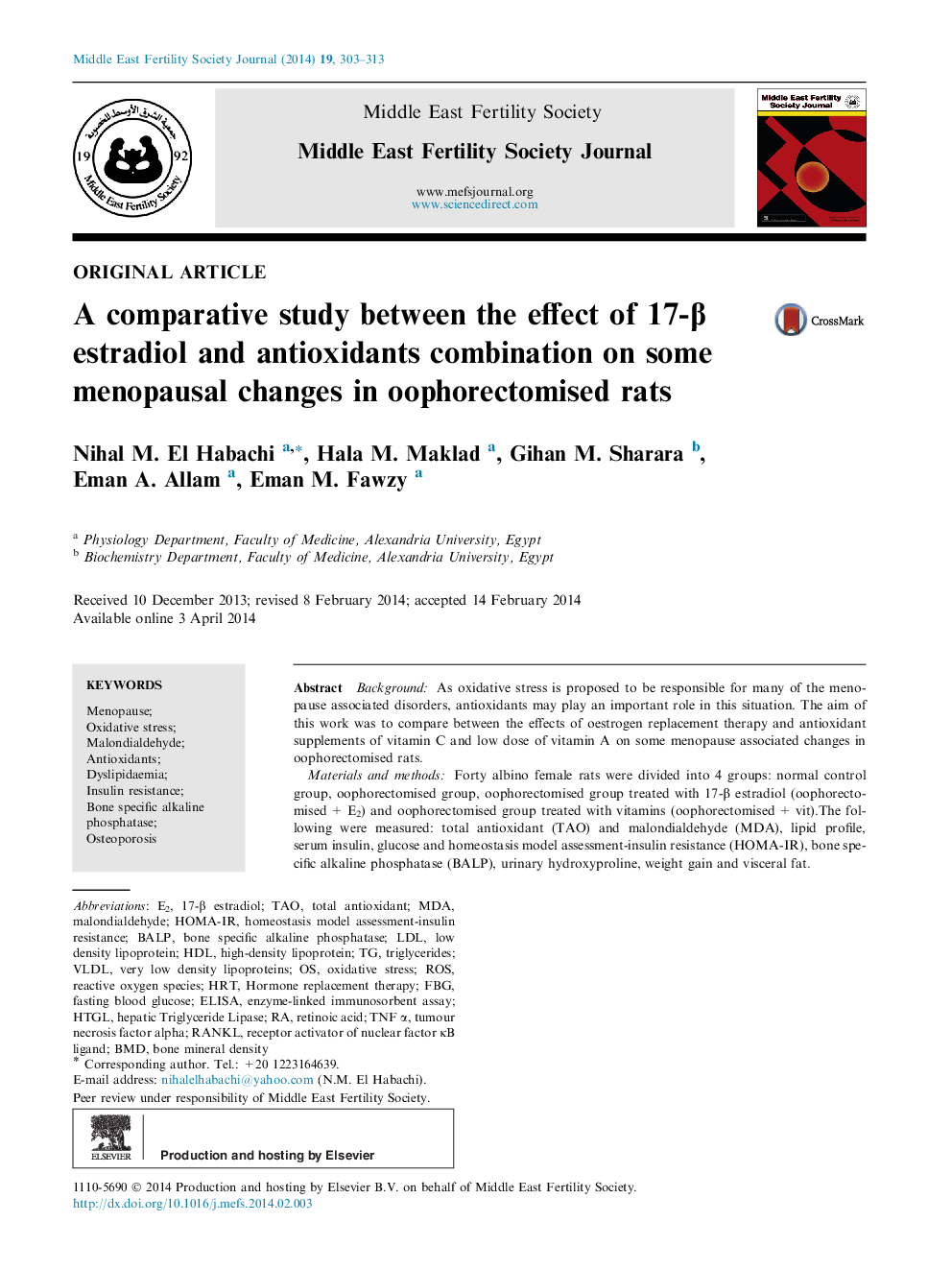| Article ID | Journal | Published Year | Pages | File Type |
|---|---|---|---|---|
| 3966120 | Middle East Fertility Society Journal | 2014 | 11 Pages |
BackgroundAs oxidative stress is proposed to be responsible for many of the menopause associated disorders, antioxidants may play an important role in this situation. The aim of this work was to compare between the effects of oestrogen replacement therapy and antioxidant supplements of vitamin C and low dose of vitamin A on some menopause associated changes in oophorectomised rats.Materials and methodsForty albino female rats were divided into 4 groups: normal control group, oophorectomised group, oophorectomised group treated with 17-β estradiol (oophorectomised + E2) and oophorectomised group treated with vitamins (oophorectomised + vit).The following were measured: total antioxidant (TAO) and malondialdehyde (MDA), lipid profile, serum insulin, glucose and homeostasis model assessment-insulin resistance (HOMA-IR), bone specific alkaline phosphatase (BALP), urinary hydroxyproline, weight gain and visceral fat.ResultsA positive correlation was found between MDA and low density lipoprotein-cholesterol (LDL) (r = 0.694 and P = 0.000), HOMA-IR (r = 0.691 and P = 0.000.) and BALP (r = 0.563 and P = 0.000) and urinary hydroxyproline level (r = 0.761 and P = 0.000). Those results denoted that OS might be a cause of dyslipidemia, insulin resistance and osteoporosis associated with menopause.Both E2 and vitamins in oophorectomised rats led to a significant decrease in MDA (F = 33.402, P = 0.000), weight gain, visceral fat (F = 7.589, p = 0.000 and F = 3.748, P = .019, respectively), cholesterol (F = 40.748, P = 0.0001), LDL cholesterol (F = 55.168, P = 0.0001), and significant increase in HDL (F = 18.393, P = 0.0001) and TAO levels (F = 14.781, P = 0.000) compared to oophorectomised rats. Also, both treatments led to a significant decrease of HOMA-IR (F = 18.933, P = 0.000, respectively), BALP (F = 13.202, P = 0.000) and urinary hydroxylproline (F = 220.012, P = 0.000). An interesting finding was detected where oophorectomised rats showed a decrease in triglyceride level which was significantly increased by E2 administration whereas antioxidant administration produced no change (F = 34.267, P = 0.0001).ConclusionOur results denote similar effects of both E2 and antioxidant’ supplements (vitamin C and low dose vitamin A) administration in surgically induced menopause in rats regarding oxidative stress, weight gain, atherogenic lipid profile changes, insulin sensitivity and bone turnover. However differences between preclinical and clinical studies must be taken into consideration especially when moving from animal studies to clinical trials.
